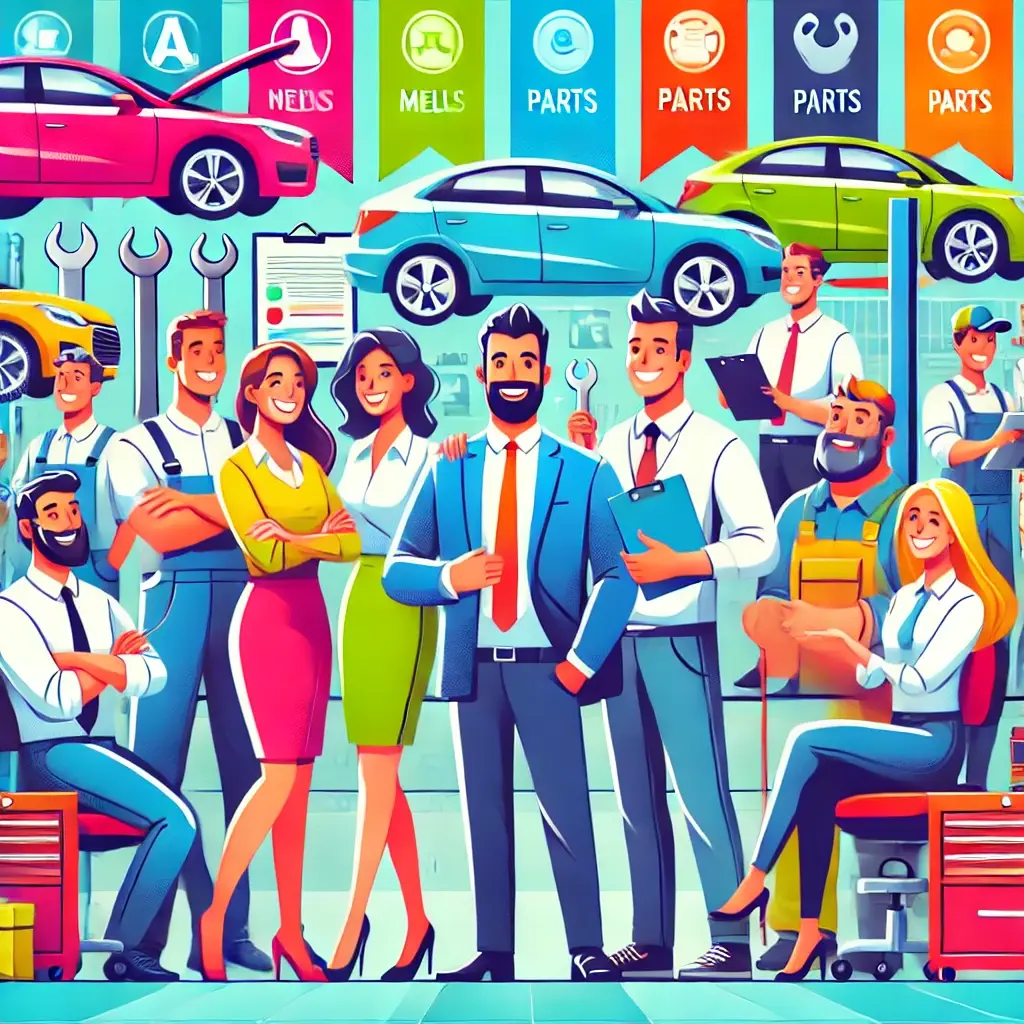How to Maximize Cash Flow by Managing Accounts Payable and Receivable
Cash flow is the lifeblood of any dealership. Managing the inflow and outflow of cash through accounts payable (AP) and accounts receivable (AR) is crucial to maintaining financial health and ensuring the dealership can meet its operational needs. In this blog post, we’ll explore key strategies to effectively manage both AP and AR, helping your dealership maximize cash flow and avoid potential cash shortages.
Why Managing Cash Flow is Essential
Before diving into the strategies, it’s important to understand why cash flow management is so critical. Cash flow represents the amount of cash flowing in and out of your dealership during a specific period. If there’s a mismatch between the money coming in (receivables) and the money going out (payables), it can lead to cash shortages, delayed payments to suppliers, and even missed opportunities to grow your dealership.
The goal of managing AP and AR is to ensure that there is always enough cash on hand to cover operating expenses, invest in inventory, and take advantage of business opportunities. Now, let’s look at how to achieve that balance.
Strategies for Managing Accounts Receivable
Accounts receivable represent the money your dealership is owed by customers, lenders, and other entities. Efficiently managing AR can significantly improve cash flow by ensuring that money owed to your dealership is collected on time. Here are strategies to streamline your AR process:
Implement Clear Payment Terms
One of the most effective ways to improve AR management is by setting clear payment terms from the start. This ensures that customers and lenders know when payments are due and reduces confusion about payment expectations.
- Best Practice: Standardize your payment terms, such as “Net 30” or “Net 45” days, to give your customers a clear deadline. Be upfront about late fees or interest charges to discourage delayed payments.
Offer Incentives for Early Payments
Encouraging customers to pay early can help speed up cash flow. By offering small discounts for payments made ahead of the due date, your dealership can bring in cash more quickly.
- Best Practice: Offer a discount, such as 2% off if the invoice is paid within 10 days, to motivate customers to pay early.
Monitor Receivables Regularly
Tracking receivables is critical to staying on top of unpaid invoices. By reviewing AR regularly, your accounting team can quickly identify overdue payments and follow up with customers.
- Best Practice: Use dealership management software to generate AR aging reports. These reports help you track outstanding payments by the length of time they’ve been overdue, allowing your team to prioritize collections.
Establish a Collections Process
If invoices are overdue, it’s important to have a structured collections process in place. This process should include sending reminders, escalating follow-up actions, and even considering collections agencies if necessary.
- Best Practice: Set up automated email reminders to notify customers of upcoming or overdue payments. For chronic late payers, consider negotiating payment plans to avoid straining the customer relationship.
Strategies for Managing Accounts Payable
Accounts payable represent the money your dealership owes to suppliers, lenders, and other service providers. Efficient AP management ensures that you maintain good relationships with your vendors and optimize cash outflows to support your dealership’s operational needs. Here are strategies to improve AP management:
Prioritize Vendor Payments
Not all vendor payments need to be made immediately. It’s important to prioritize payments to essential suppliers and service providers who are critical to keeping the dealership running, while delaying payments to less essential vendors when cash flow is tight.
- Best Practice: Categorize vendors into essential and non-essential groups. Pay essential vendors (like those providing inventory) on time, and consider negotiating longer payment terms with non-essential vendors.
Negotiate Payment Terms with Vendors
Similar to managing AR, negotiating favorable payment terms with vendors can help your dealership hold on to cash longer. For instance, extending payment terms from “Net 30” to “Net 60” days can give you more breathing room.
- Best Practice: Build strong relationships with key vendors and negotiate extended payment terms that allow you more flexibility in managing cash outflows.
Take Advantage of Early Payment Discounts
Many suppliers offer discounts for early payments. If your dealership is in a healthy cash flow position, taking advantage of these discounts can save money in the long run.
- Best Practice: Review vendor contracts to see which suppliers offer early payment discounts. If the discount outweighs the benefit of holding onto the cash longer, consider paying early.
Automate AP Processes
Manually processing invoices and payments can lead to delays and human error. Automating the AP process with dealership accounting software can streamline payments, reduce late fees, and improve overall cash flow management.
- Best Practice: Use automated invoice scanning and approval workflows to ensure that vendor payments are processed efficiently and on time.
Balancing Accounts Payable and Receivable for Optimal Cash Flow
The key to maximizing cash flow lies in balancing the timing of accounts receivable and accounts payable. You want to collect receivables as quickly as possible while delaying payables to improve cash on hand. Here’s how to achieve that balance:
Match AR Inflows to AP Outflows
Ideally, you should time your AR inflows to match your AP outflows. This ensures that there’s always enough cash to meet your obligations without needing to borrow money or dip into reserves.
- Best Practice: Review your cash flow forecast regularly to ensure that incoming payments (AR) are aligned with upcoming payables (AP). If there’s a cash flow gap, take action to speed up collections or negotiate extended payment terms.
Build a Cash Reserve
A healthy dealership should always have a cash reserve to handle unexpected expenses or temporary cash flow shortages. By setting aside a portion of your cash flow, you can avoid disruptions to your operations when payments are delayed or large expenses arise.
- Best Practice: Aim to build a cash reserve that covers at least 3-6 months of operating expenses to protect your dealership during lean periods.
Monitor Cash Flow Regularly
Effective cash flow management requires constant monitoring. By keeping a close eye on the timing of inflows and outflows, your dealership’s accounting team can quickly spot cash flow issues and take corrective action before they become serious.
- Best Practice: Use cash flow forecasting tools to project future cash inflows and outflows. Adjust your payment strategies as needed based on the forecast to maintain a healthy cash flow balance.
Effective AP and AR Management Ensures Dealership Success
Managing accounts payable and receivable is about more than just paying bills and collecting payments—it’s about maintaining a healthy cash flow that allows your dealership to thrive. By implementing the strategies outlined above, you can improve the timing of inflows and outflows, strengthen vendor and customer relationships, and ensure that your dealership remains financially sound.







